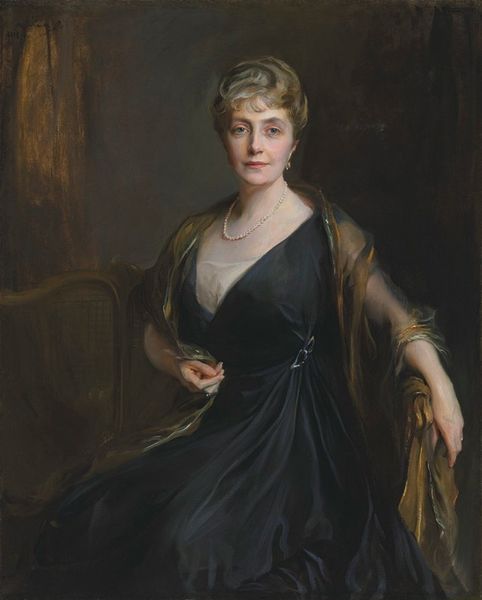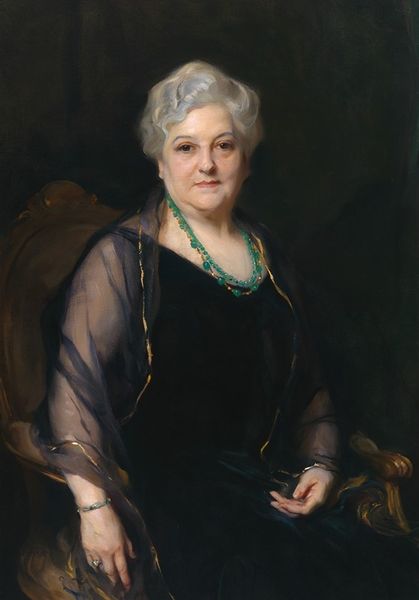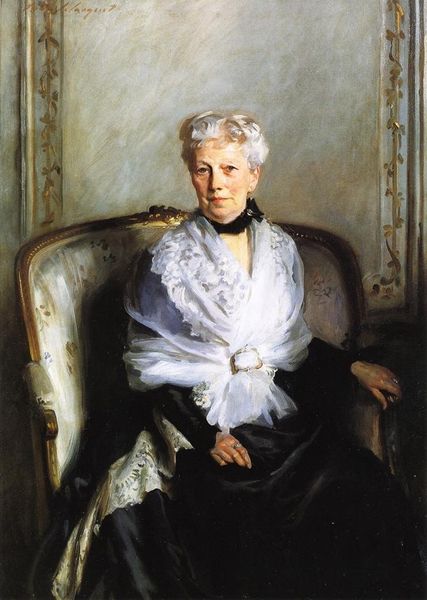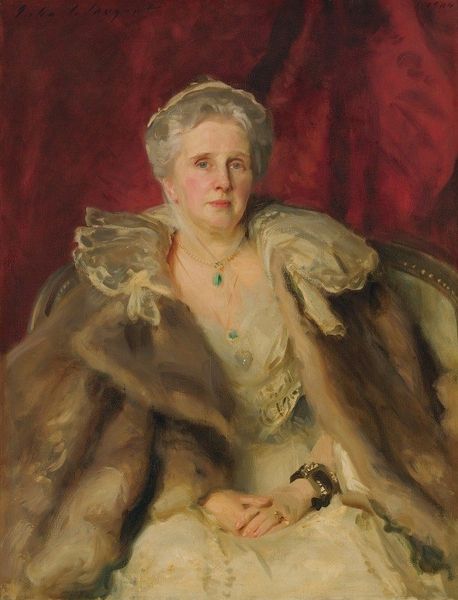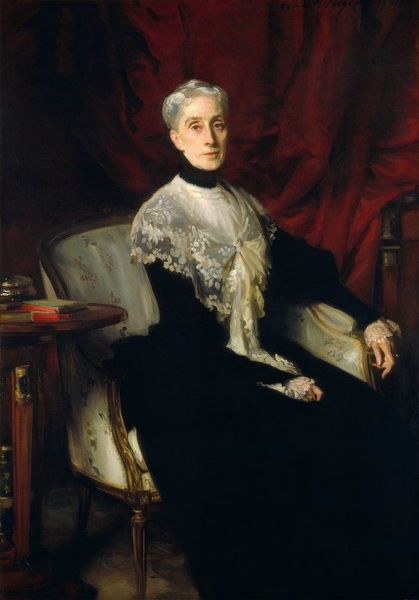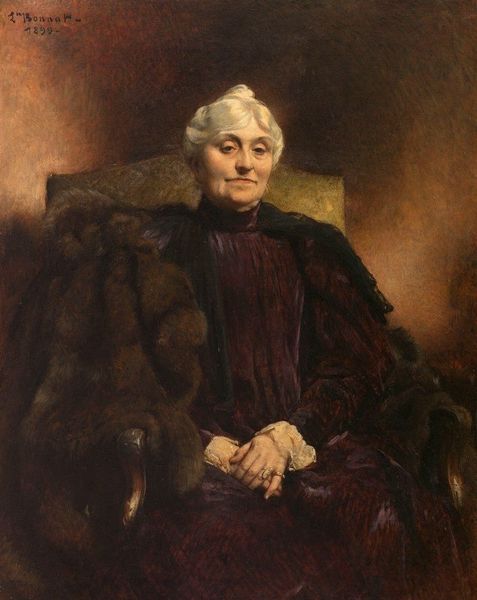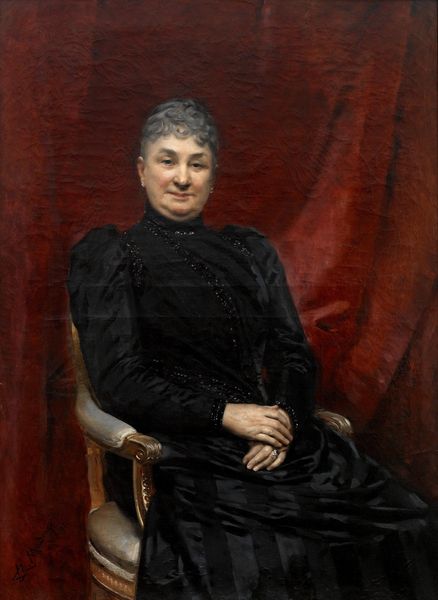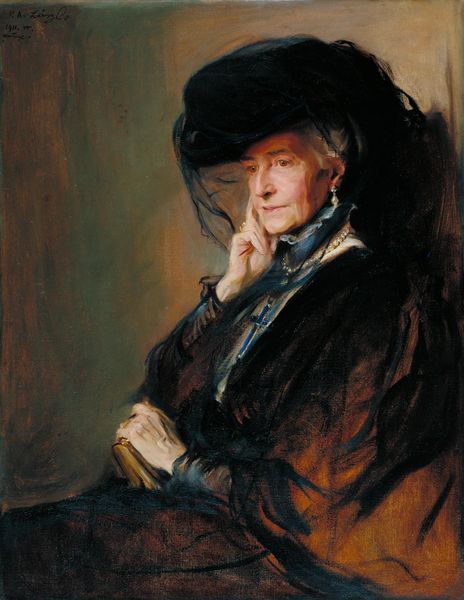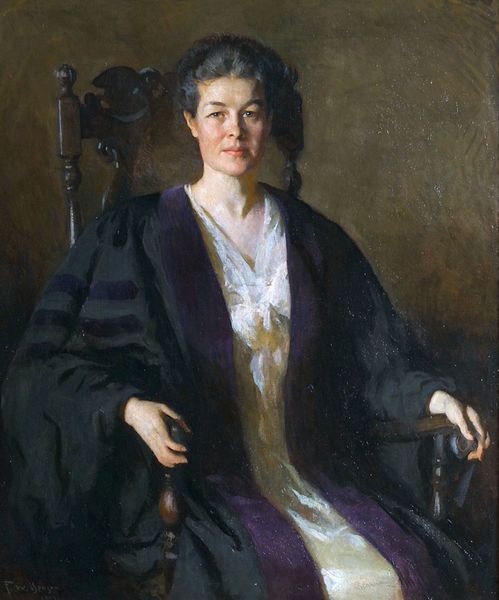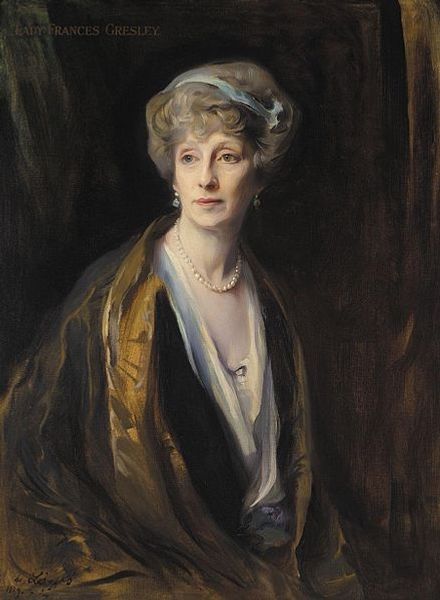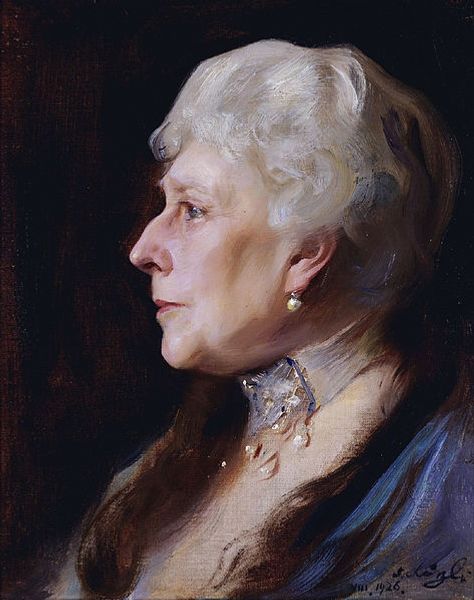
Copyright: Public Domain: Artvee
Editor: This is Philip Alexius de László’s portrait of Clara Margaret Cook Kellogg, painted in 1929. It’s an oil painting, and it strikes me as very traditional, almost stately. What do you see in this piece from your perspective? Curator: Well, beyond the artistic skill, what stands out to me is what this portrait tells us about the social position of both the sitter and the artist at that time. De László was a highly sought-after portraitist among the European aristocracy and the wealthy, painting figures like royalty and prominent industrialists. Editor: So, being painted by him was a statement in itself? Curator: Precisely. This portrait served as a marker of status for Clara Margaret Cook Kellogg. The artwork tells us she occupied a certain level within society, didn't it? It's not just a likeness; it's an emblem of belonging and power. What do you notice about her clothes? Editor: They definitely speak to her wealth, particularly the luxurious wrap. Also, I note she has no jewelry beyond a choker and bracelet, or other accessories that call attention to themselves, so her understated appearance conveys respectability and an established position, perhaps old money. Curator: Indeed. Even her controlled posture and slightly aloof gaze contributes to this image of established wealth. De László, while a fantastic artist, also operated within and reinforced existing power structures. By painting her, he perpetuated a visual language of social hierarchy. Did the artwork spark any other insights? Editor: I hadn't thought about how much a portrait could say about power dynamics. Now I see the artist playing an important social role. Curator: Exactly. And even today, museums continue these traditions through collecting, exhibiting, and, therefore, validating certain narratives over others. We’re all implicated in the politics of imagery, including ourselves.
Comments
No comments
Be the first to comment and join the conversation on the ultimate creative platform.
